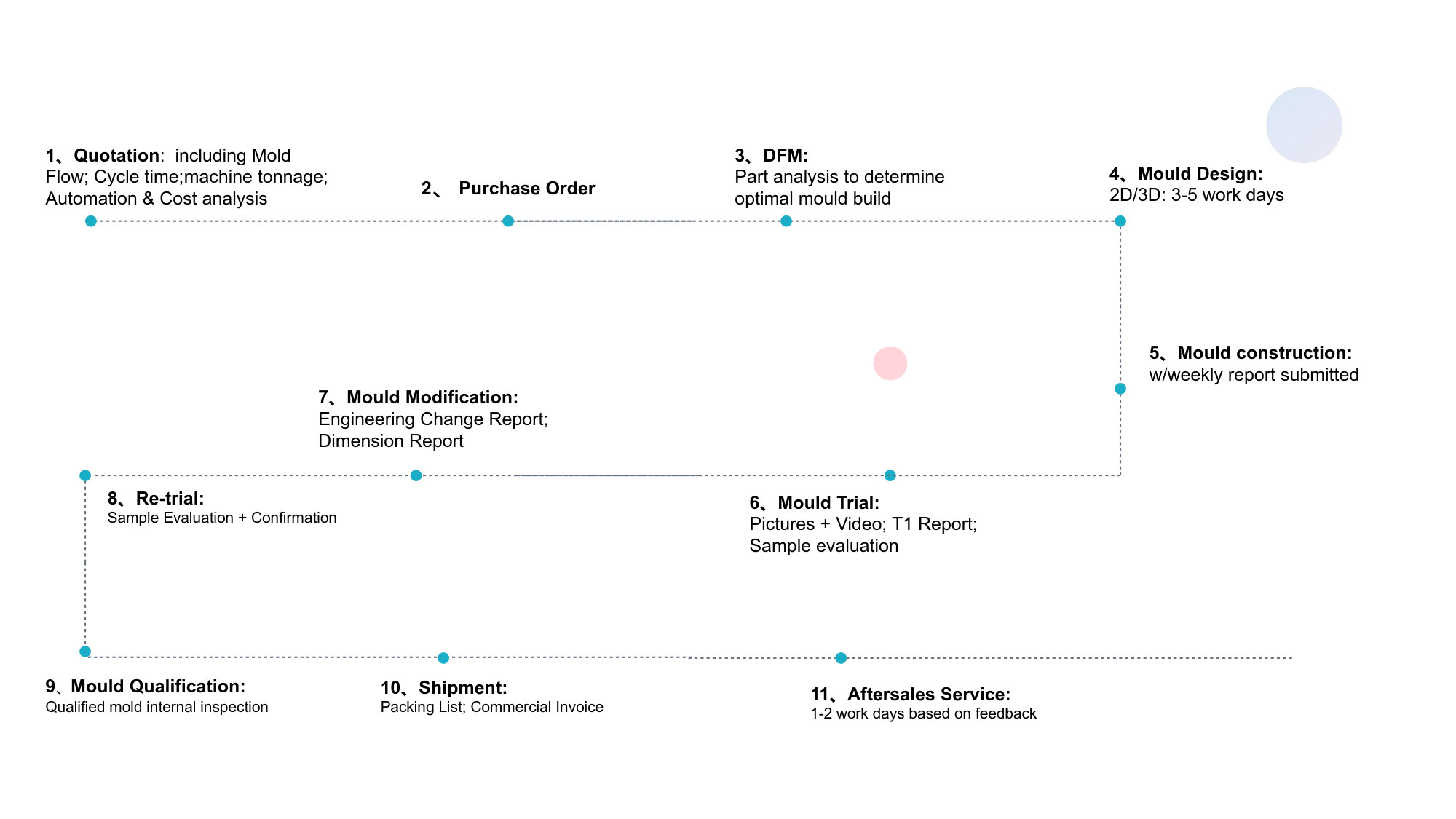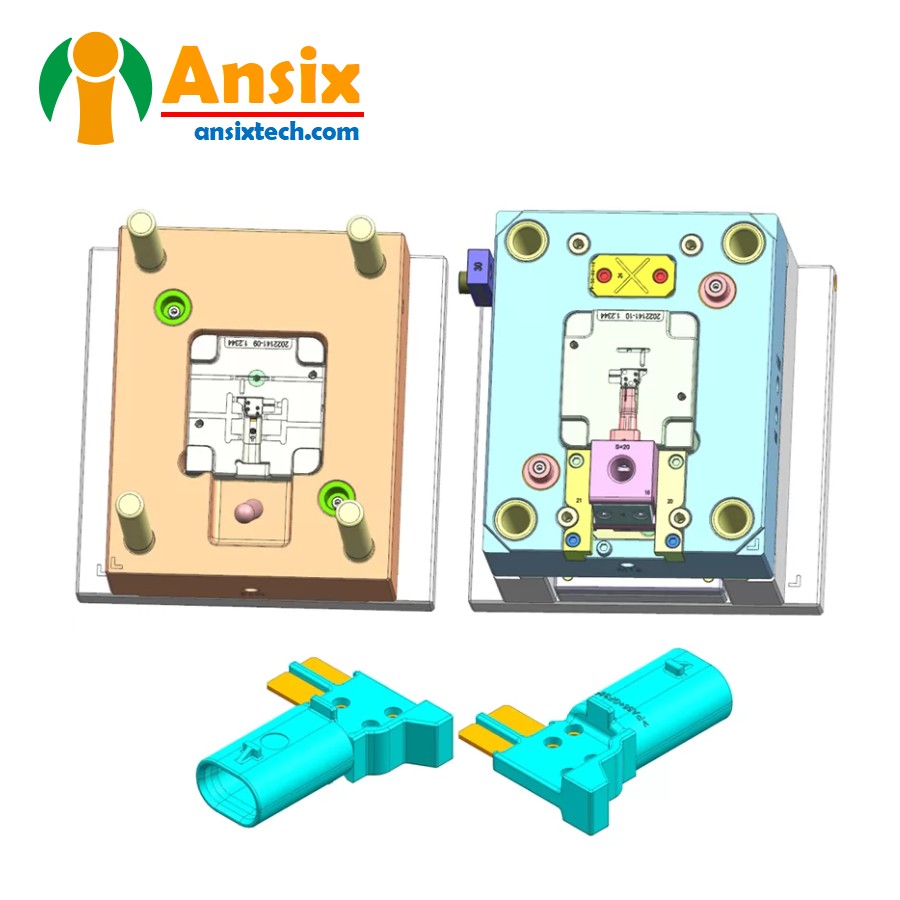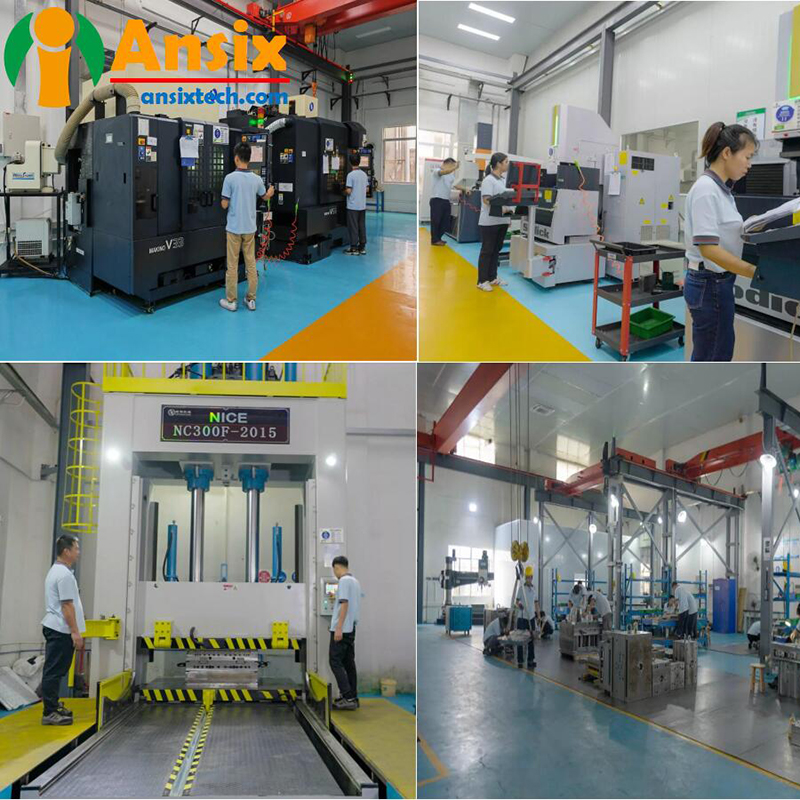Automotive Electrical Connector Injection Mold Moulage Par Injection
FEATURES

- Automotive Electrical Connector Injection Mold Moulage Par Injection
Maintenance and maintenance: Regular maintenance and upkeep of injection molds, including cleaning, lubrication, replacement of worn parts, etc., to ensure long-term use of the mold.The manufacturing of automobile thermostat pump body injection molds needs to take into account the shape, size, material properties and other factors of the pump body. At the same time, it is also necessary to design an appropriate mold structure and cooling system according to the requirements of the injection molding process to ensure the quality and efficiency of injection molding. The manufacturing of injection molds requires experienced engineers and technicians to ensure the accuracy and stability of the mold.Please send us a message(Email: info@ansixtech.com ) at any time and our team will reply to you within 12 hours.
-
Mold Description
Product Materials:
PA66+GF30
Mold Material:
2344Number of Cavities:
1*2
Glue Feeding Method:
Cold runner
Cooling Method:
Water cooling
Molding Cycle
22.5s

- Automotive Electrical Connector Mold flow analysis and mold designMold flow analysis and material selection of automotive electrical connector molds are very important aspects in the manufacturing of automotive electrical connectors.Mold flow analysis of automotive electrical connector mold:a. Collect relevant information about automotive electrical connectors, including size, shape, material, etc.b. Use mold flow analysis software to import the CAD model of the automotive electrical connector and set the injection molding process parameters, such as injection speed, temperature, pressure, etc.c. Conduct mold flow analysis to simulate the melt flow, filling, cooling and other processes during the injection molding process to evaluate the filling performance, bubbles, short shots and other defects of the connector, and optimize the injection molding process parameters.Material selection:a. Select the appropriate injection molding material according to the requirements of the connector. Commonly used injection molding materials include PA66, PA6, PBT, etc.b. Considering the working environment and requirements of the connector, select injection molding materials with good mechanical properties, high temperature resistance, chemical resistance and wear resistance.c. According to the characteristics of the connector, select materials with good electrical insulation properties and arc resistance properties.During the mold flow analysis and automotive electrical connector mold design process, the following points need to be noted:Ensure the filling performance of the connector: Through mold flow analysis, the injection molding process parameters are optimized to ensure the filling performance of the connector is good and avoid defects.Design of cooling system: Reasonably design the cooling system to ensure good cooling effect during the injection molding process and improve production efficiency and product quality.Design of demoulding system: According to the shape and requirements of the connector, design an appropriate demoulding system to ensure that the connector can be demoulded smoothly and avoid damage and deformation.Injection molding sequence and injection point location: Determine the injection sequence and injection point location to ensure that the plastic material can fully fill the mold cavity and avoid voids and defects.The mold flow analysis and material selection of automotive electrical connector molds require mold flow analysis, optimization of injection molding process parameters, and selection of appropriate injection molding materials. Through reasonable design and control, high-quality automotive electrical connectors can be obtained.


- Automotive Electrical Connector of the mold manufacturing process and product material selectionThe manufacturing and processing of automotive electrical connector molds involves the following aspects:Mold design:Design the mold according to the requirements of automotive electrical connectors, including mold cavity, mold core, demoulding system, cooling system, etc.Ensure the accuracy and size of the mold meet the requirements to ensure the quality and stability of the connector.Use CAD software for mold design and generate 3D models and engineering drawings of the mold.Mold processing:According to the mold design, select appropriate processing technology and equipment, such as CNC machining center, EDM machine, etc.Processing of mold parts, including mold cavity, mold core, demoulding system, cooling system, etc. Ensure that the processing accuracy and size meet the requirements.Assemble mold parts to ensure accurate fit and adjustment of parts and ensure the stability and reliability of the mold.Mold debugging and mold trial:Conduct mold debugging and trial testing, including adjusting injection molding process parameters, optimizing the demoulding system and cooling system to ensure the filling performance and quality of the connector.Conduct trial mold production to verify the performance and stability of the mold to ensure the quality and consistency of the connector.Mold maintenance and upkeep:Carry out regular mold maintenance and upkeep, including cleaning, lubrication, replacement of worn parts, etc., to extend the service life of the mold and ensure the continuity of production.Carry out regular inspection and maintenance of molds, and promptly discover and solve mold problems to ensure the quality and production efficiency of connectors.Through the above steps, the manufacturing and processing of automotive electrical connector molds can be realized. During the entire manufacturing process, it is necessary to strictly control the design and processing accuracy of the mold, the debugging and trial molding of the mold, and the maintenance and upkeep of the mold to ensure the quality and production efficiency of the connector.
- Automotive Electrical Connector Mass production and Quality controlThe mass production of automotive electrical connectors involves the following aspects:Production equipment and processes:Select appropriate injection molding machines and automation equipment to meet mass production needs.Design and optimize injection molding process parameters, including injection speed, temperature, pressure, etc., to ensure product quality and stability.Determine the injection sequence and injection point location to ensure that the plastic material can fully fill the mold cavity and avoid voids and defects.Mold manufacturing and maintenance:Design and manufacture appropriate molds, including mold cavities, mold cores, demoulding systems, cooling systems, etc.Ensure that the accuracy and size of the mold meet the requirements to ensure product quality and stability.Carry out regular mold maintenance and upkeep to extend the service life of the mold and ensure the continuity of production.Quality control:Establish a complete quality control system, including quality inspection, process control and defective product processing, to ensure that products meet quality standards.Conduct inspections and tests on product appearance quality, dimensional accuracy, physical properties, etc. to ensure product quality and consistency.Production planning and scheduling:Develop reasonable production plans and schedules, and rationally arrange production tasks and resources to improve production efficiency and reduce production downtime.Adjust and optimize production plans based on market demand and customer orders to meet customer needs.Through the above steps, mass production of automotive electrical connectors can be achieved. During the entire production process, injection molding process parameters, mold manufacturing and maintenance, quality control, and reasonable arrangements for production plans need to be strictly controlled to ensure product quality and production efficiency.




